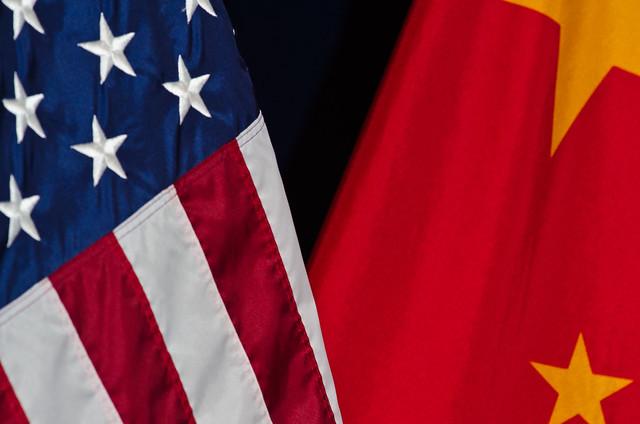The end of Chimerica
Posted By John Lee on May 1, 2019 @ 06:00

On the morning of 4 October 2018, US Vice President Mike Pence was invited on to the stage at the Hudson Institute to deliver what many assumed would be a typical forward-leaning speech on China. Pence began by accusing China of ‘employing a whole-of-government approach, using political, economic and military tools, as well as propaganda, to advance its influence’ at the expense of the US and its allies, before launching into more specific allegations of Chinese misbehaviour. Over the next 30 minutes, Pence gave a speech [1] that was later interpreted [2] by my fellow Hudson Institute colleague, Walter Russell Mead, as the announcing of ‘Cold War II’.
Although the rhetoric was several notches tougher, Pence didn’t go rogue. The tone and content are consistent with the 2017 national security strategy [3] and the 2018 national defence strategy [4] released by the Trump administration. Those two documents represent the considered view of the agencies and departments responsible for American security and intelligence assessments and foreign policy.
Moreover, these judgements will survive past the Trump era. The administration’s turn against China is perhaps the only major policy of Donald Trump’s that the Democrats overwhelmingly support [5]. The majority of American think tank experts are supportive. (Just spend a couple of weeks there and that will become clear.) Much of the American business community has shifted [6] remarkably from positive to negative views of China. The American public is broadly in agreement [7] that China doesn’t play by the rules.
This points to the Americans becoming more willing to accept the economic and other costs of competing against China—rather than cooperating with or tolerating it—in what they have concluded is a comprehensive strategic and economic rivalry.
Competition in all areas has been deepening between the US and China for some time. So, what has changed? In a new Strategic Insights paper [8], released today by ASPI and the United States Studies Centre, I identify three major shifts from what has been before.
1. China can’t be shaped—but it should be countered
For eight administrations going back to Richard Nixon, there was the hope and assumption that deepening commercial, diplomatic and cultural ties would transform China’s internal development and external behaviour in a more benign direction.
Pence’s speech is the first by a senior official to confirm departure from that approach. The Trump administration isn’t necessarily concluding that China’s internal and external behaviour can never be shaped or changed. But it’s making the case that Beijing is moving in the opposite direction to political and economic liberalisation and has been for some time. China isn’t merely ‘free-riding’ or failing to become a ‘responsible stakeholder’. It is actively undermining American leadership and capabilities.
This means time and patience are no longer luxuries Washington can afford.
2. The US will support global and international economic institutions only if they produce ‘fair’ or neutral outcomes
In the era of uncontested US power during the 15 years after the end of the Cold War, the rapid advance of globalisation and interdependence between nations was generally viewed in one of two ways:
- The greater the participation by nations in the global system, and the more interdependent they became vis-à-vis the advanced liberal democratic nations, the more their values and interests would align with those of the US, or
- Globalisation and interdependence were largely strategically indifferent and functional phenomena that facilitated international trade, the movement of people and capital, and other cross-border transactions.
America is now challenging the validity of these two perspectives as they apply to Chinese participation in the global economy. This is most apparent in the frequent lamentations about Chinese economic and trade practices, and frustrations about the World Trade Organization (among other international bodies) and its institutional and legal incapacity to change, or rein in, Chinese economic misbehaviour. America argues that Chinese approaches inherently undermine what globalisation and interdependence are designed to facilitate and enhance: the maximisation of efficiency and the creation of new opportunities for participants based on market forces.
3. Civilian technologies and supply chains will be weaponised and guarded
The general trend over the past few decades has been a lowering of tariffs and other behind-the-border barriers between all major trading economies. The Trump administration is signalling that a different perspective is taking hold and is already apparent in two ways.
First, there will be more American attempts to capture a greater share of the value chain across a growing number of sectors and deny it to China. One rationale for the tariffs imposed by the US on Chinese products is to ‘punish’ China for stealing intellectual property from American firms in high-value and advanced sectors. Another is to encourage the movement of critical components of the supply chain for production of these goods and services away from China and back to the US, or at least into genuine market economies.
Second, we are entering a bifurcated world when it comes to ‘critical technology’, and the definition of that term will expand over time. The excluding of Huawei from America’s 5G network is only the beginning.
The US has just cause to complain about China’s behaviour and there is no ‘waiting this out’ for Australia. Canberra will have to decide whether the international rules-based economic order must be defended against Chinese actions, and whether to support the US carrots-and-sticks approach as the best way to persuade China to play by the rules.
Article printed from The Strategist: https://aspistrategist.ru
URL to article: /the-end-of-chimerica/
URLs in this post:
[1] speech: https://www.hudson.org/events/1610-vice-president-mike-pence-s-remarks-on-the-administration-s-policy-towards-china102018
[2] interpreted: https://www.hudson.org/research/14608-mike-pence-announces-cold-war-ii
[3] 2017 national security strategy: https://www.whitehouse.gov/wp-content/uploads/2017/12/NSS-Final-12-18-2017-0905.pdf
[4] 2018 national defence strategy: https://dod.defense.gov/Portals/1/Documents/pubs/2018-National-Defense-Strategy-Summary.pdf
[5] overwhelmingly support: https://www.forbes.com/sites/kenrapoza/2018/11/05/dear-chinese-government-the-democrats-wont-save-you/#52d1ef685f51
[6] shifted: https://www.bloomberg.com/opinion/articles/2018-09-06/how-china-went-from-a-business-opportunity-to-enemy-no-1
[7] in agreement: https://news.gallup.com/poll/236843/americans-say-china-trade-unfair-trade-canada-fair.aspx
[8] Strategic Insights paper: https://www.aspistrategist.ru/report/end-chimerica-passing-global-economic-consensus-and-rise-us-china-strategic-technological
Click here to print.